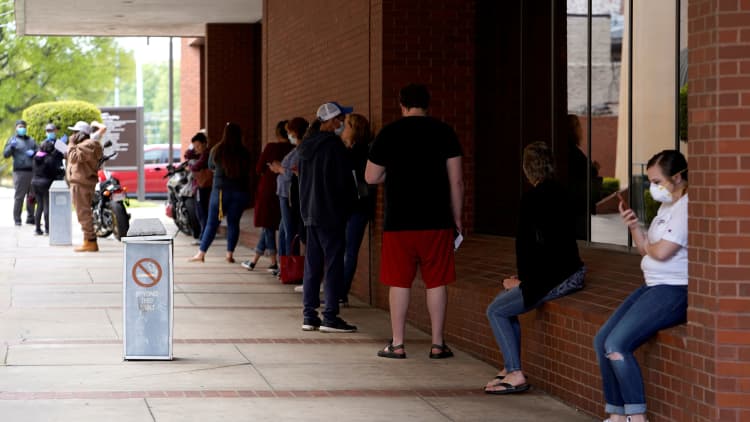Lower-income earners took an especially hard hit during the first wave of layoffs related to the coronavirus pandemic, according to a Federal Reserve report Thursday.
As companies quickly cut workers to comply with social distancing requirements, 39% of people living in households that had incomes of less than $40,000 reported a job loss, the Fed said in its annual Report on the Economic Well-Being of U.S. Households.
"This reversal of economic fortune has caused a level of pain that is hard to capture in words, as lives are upended amid great uncertainty about the future," Fed Chairman Jerome Powell said in a speech Wednesday in which he referenced the damage done to lower-income households.
Congress and the Fed have responded to the crisis with a series of rescue measures aimed at keeping individuals and businesses afloat. Among them are extended unemployment benefits and payment above what some workers were making before the furloughs.

The report normally summarizes financial standing at the end of calendar years, but the central bank this year provided an addendum that surveyed additional respondents in the early part of April. By that time, nearly 17 million Americans already had filed unemployment claims; close to 20 million have filed since, including nearly 3 million for the week ended May 9.
Findings through the end of 2019 showed households generally in solid shape — 75% reported being either "OK" or "living comfortably," and that number edged only a bit lower, to 72%, during the April 3-6 questioning period.
However, there were indications that with the national economic lockdown lasting longer than anticipated that households would have trouble adjusting. Another question found that about 30% of adults said they couldn't cover three months of living expenses in the case of a job loss.
At the time the supplemental survey was taken, optimism remained high that job losses would be short-lived.
Some 91% of those surveyed said they were told that they would be called back to work. Of that group 77% said they had not received a date to return.
At that time, financial hardships also were not especially pronounced, as 64% of those who lost their jobs or had hours reduced said they would be able to pay their bills that month, as opposed to 85% who had not lost a job or had hours cut.
Since the survey, though, layoffs have continued, with a total of 36.5 million unemployment claims filed over the past eight weeks. The Labor Department reported last week that nonfarm payrolls had been reduced by 20.5 million in April and the unemployment rate climbed to 14.7%, the highest since the Great Depression.
Lower-paying service industries have been hardest hit as restaurants and bars have remained closed across much of the nation except for delivery and curbside pickup. In leisure and hospitality alone, payrolls fell by 7.7 million during April.


